It was the last decade of the 19th century and business was booming for Lexington architect H.W. Aldenburg. With a roster of prominent clients, he and partner James R. Scott were constructing homes & buildings across the Bluegrass, from stone manses downtown to grand hotels like Winchester’s Brown-Proctoria.
Born in Cologne, Germany, little is known about Aldenburg’s early years. There has been some confusion as to whether the “H” in his initials stood for Hubert or Henry; some early articles further transpose the two letters, calling him “W.H.”
One of the few sources for biographical details is an 1887 text entitled A Review of Lexington, Kentucky, as she is: her wealth and industry, her wonderful growth and admirable enterprise, her great business concerns, her manufacturing advances, and commercial resource. Prepared as a marketing piece, it offers a detailed directory of local businesses, each with its own glowing entry.
The text on Aldenburg & Scott begins by noting that in ancient Egypt, “the architects were even more important personages than kings”. It goes on to claim that foreign architects in America “invariably improve on what has gone before”, revealing a self-consciousness about his outsider status. (That uneasiness is well-earned, as famed architect John McMurtry later denigrated Aldenburg and others like H.L. Rowe as “foreign-born amateur architects.”)

The veracity of the provided biographical details later in the entry is unknown. It claims that after graduating from Stuttgart Polytechnic, Aldenburg worked in Vienna (helping to construct the Exposition Center at the 1873 World’s Fair), Milan and Paris. He immigrated to New York City, working there and in Chicago and Washington D.C. as a supervising architect. In 1886, one year before publication, he arrived in Lexington and quickly partnered with a young, native Lexingtonian architect, J.R. Scott.
By 1887, the firm was well-exposed in the paper, running advertisements across the region. An article from the same year identifies the two as the architects for the Midway Orphan School. The next decade would prove busy, with Aldenburg’s portfolio growing to include commercial, educational, & residential projects. Often working in the Romanesque style preferred by Lexington’s Gilded Age elite, Aldenburg was instrumental in establishing Fayette Park as a desirable enclave for successful businessmen & their families. Known residences include 323 & 325 N. Broadway for D.F. Frazee & J.M. Scott, 431 Fayette Park for Edward Bassett, & 417 Fayette Park for Dan Swigert, as well as 412 & 416 W. Third Street.

Success did not come without scrapes, however. In a few short years’ time, Aldenburg was robbed of $75, faced lawsuits for unpaid bills, and had more than one altercation on the street. Aldenburg also found himself under attack by architect John McMurtry. McMurtry took to the papers to criticize the floor plans on Aldenburg’s “Scott Houses” on South Mill. He also mocked the arched entry of 412 West Third Street as being akin to the tollgate arches on Kentucky’s turnpikes. Aldenburg & Scott responded, suggesting the 76-year-old McMurtry “travel”, “study”, and “keep up with the times”.
At some point in these fruitful years, Aldenburg contracted tuberculosis. His work had quieted, and while the firm was still advertising its services as late as 1907, his finest works were behind him. He next appears in the newspapers at his death in 1908, with numerous sensational articles to follow.

Aldenburg, who boarded alone above a printing business on South Limestone, had died and was not discovered until days later. No local relatives could be found to claim his body for burial. Several days later, Aldenburg was finally laid to rest at The Lexington Cemetery with pallbearers including fellow German architect Martin Geertz. Later that year, the court appointed a bank as his estate administrator and architects Geertz, H.L. Rowe, & Arthur Giannini to appraise his estate. The results of the appraisal were recorded as paltry with his personal effects worth less than $20 in total. The press added to the indignity, blaring the headline “DIED IN POVERTY”. Later, a bittersweet finding: Aldenburg had unknowingly inherited 3000 marks from a German relative some time ending life as a pauper in Kentucky.

Today, Aldenburg himself is nearly forgotten while much of his work remains intact, boldly evoking the Bluegrass’s grand Gilded Age.
Only a dozen or so residences & buildings are today recognized as Aldenburg’s work, despite his prolific career. Many more have likely been lost to history. If you know of another Aldenburg project, please share!
Lexington
323 & 325 North Broadway “mirror houses” for the families of friends D.F. Frazee & J.M. Scott
431 Fayette Park for banker Edward Bassett
417 Fayette Park for horseman Dan Swigert
A “log cottage” near Paris Pike where Dan Swigert peacefully lived out his last days
The Protestant Infirmary, forerunner to Good Samaritan (now demolished) and an annex (later the site of Hurst Office Supply)
312, 328, 330 South Mill Street, part of the “Scott House Historic District”
416 West Third Street for Walter Scott House
Winchester
Winchester Citizen National Bank
Versailles
The old Woodford Sun building
The Old Amsden Bank Building
Paris
515 Pleasant Street for John C. Brent
335-339 Main Street Bourbon Agricultural Bank Building
Have a house with history? We’re historic home experts- request a consultation today.



